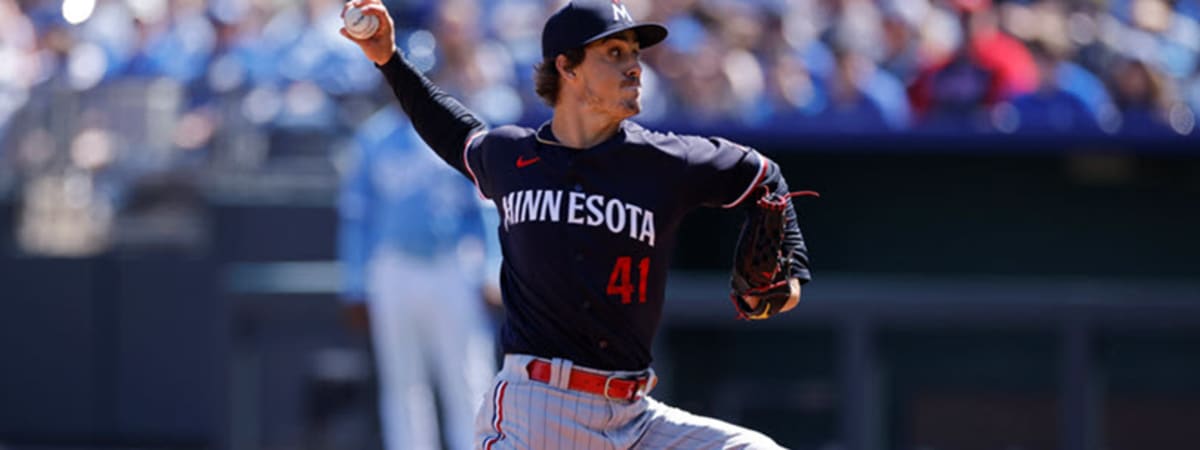Alright, so let’s talk about Mackenzie Gore and the whole fantasy baseball rollercoaster he’s been for me. It feels like ages ago when the hype train was chugging along full steam for this guy. I remember seeing his name pop up everywhere – “next big lefty,” “can’t-miss prospect,” you know the drill.

My First Brush with the Gore Hype
Initially, I was a bit skeptical. We see these highly touted arms come up all the time, and it’s always a mixed bag. My league mates were buzzing, some already penciling him in as a future ace on their fantasy squads before he’d even thrown a meaningful MLB inning. I decided to just watch from the sidelines at first. I put him on my watchlist, of course. You gotta keep tabs on these guys.
The “Wait and See” Approach
So, when he finally got the call, I didn’t jump immediately. My strategy was simple: let him get a few starts under his belt. Let’s see how he adjusts, how the league reacts to him. I’ve been burned too many times by grabbing prospects too early, only for them to struggle and get sent back down, or worse, tank my ratios for weeks.
Taking the Plunge (Eventually)
After a couple of decent outings, I started to get a little interested. He showed flashes, that live arm was definitely there. Then, there was that one week where a pitcher on my roster went down with an injury, and I needed a streamer with upside. Gore was available on the waiver wire. I thought, “Okay, fine, let’s do this.” I put in a modest bid, nothing crazy, and managed to snag him.
- Initial Excitement: The first few starts after I picked him up were pretty solid. He was getting strikeouts, limiting damage mostly. I was feeling pretty smug, like I’d timed it perfectly.
- The Inevitable Bumps: But then, as it often happens with young pitchers, the league started to adjust. He had a few rough outings. Walks started to creep up. The ERA started to climb. My smugness faded, replaced by that familiar fantasy manager anxiety.
The Decision-Making Grind
This is where the real work began. Every week was a debate: “Do I start him? Do I bench him?” Matchups became super critical. If he was facing a weak lineup at home, okay, maybe. If it was a tough road start against a good offense? My finger hovered over the bench button.

I spent a good amount of time digging into his underlying numbers, not just the ERA. Was he getting unlucky? Were the strikeouts still there even when he got hit around? Sometimes the peripherals offered hope, other times they just confirmed my fears. It was a constant back-and-forth.
There was one particular stretch where he had like, three bad starts in a row. My team was in a tight race, and I couldn’t afford those blow-ups. I seriously considered dropping him. I even put him on the trade block, just to see if anyone would bite, maybe someone still believed in the early hype more than I did at that point. No takers, not for what I felt was even remotely fair value anyway.
Sticking With It (For a While)
I ended up holding onto him longer than I probably should have during that rough patch. Part of it was the memory of those good starts, that “what if he turns it around next week?” feeling. Part of it was just stubbornness, I guess. I’d invested a waiver claim and roster spot, I wanted to see some return.
The Outcome and What I Learned
Eventually, I did move on. It wasn’t a dramatic rage-drop, more of a quiet realization that the inconsistency was just too much for my team’s needs at that particular time. I think he got moved to the bullpen for a bit with his real-life team around then, or there was an injury concern, which made the decision easier.

Looking back, my experience with Mackenzie Gore in fantasy was a classic lesson in prospect volatility. The talent is clearly there, no doubt. But talent doesn’t always translate to immediate, consistent fantasy production, especially for starting pitchers. It taught me to temper my expectations, even when the upside is tantalizing.
Now, when I see a young pitcher like him, I’m much more cautious. I’ll still watch, I’ll still be interested, but I’m less likely to get caught up in the initial wave of excitement. Patience is key, both in waiting for the right time to acquire and knowing when it’s time to cut bait if it’s not working out. It’s all part of the game, right? You win some, you learn from others.
